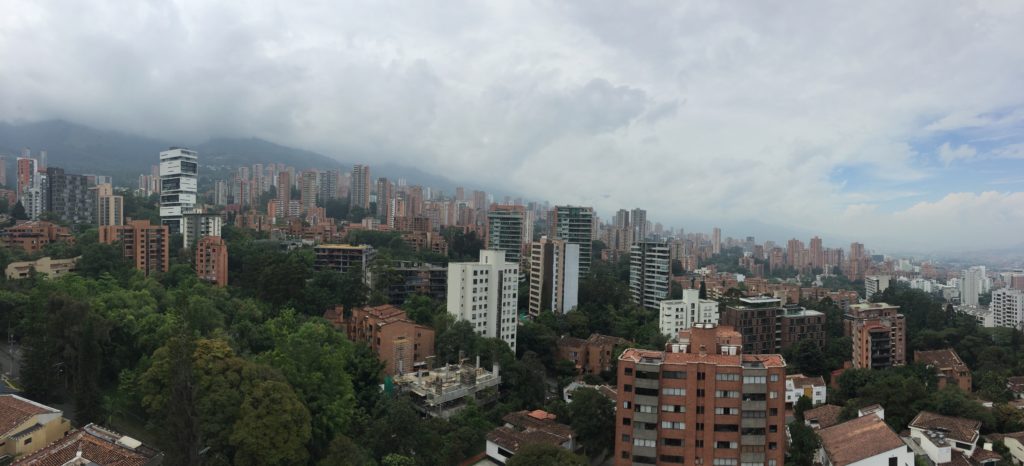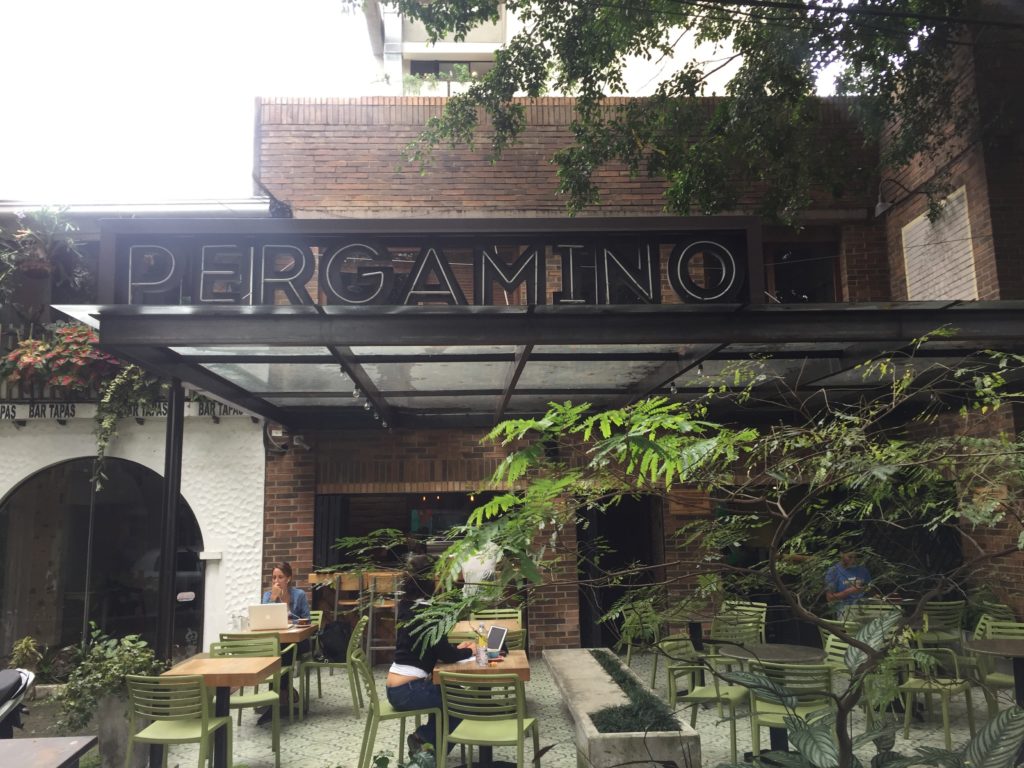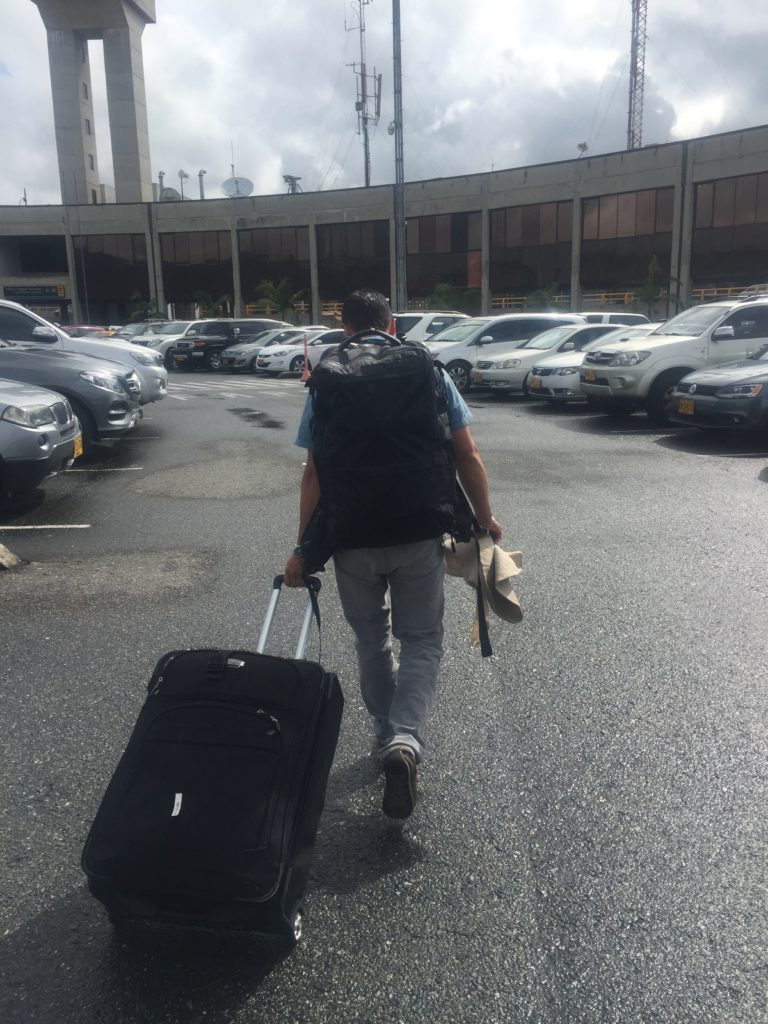“Colombia is dangerous. Don’t go there!”
“It’s full of drug traffickers, violence and kidnapping.”
“You’re going to Colombia?! Why??”
These were some of the reactions and warnings I received when I told people I was moving to Medellin, Colombia.
Granted, these reactions are fair given the fact that Medellin was once one of the most dangerous cities in the world.
But then again, does anyone say that sort of thing when people go to St. Louis, Missouri or Baltimore, Maryland (also some of the world’s most dangerous cities…and today, far more dangerous than Medellin)?
Didn’t think so.
I had also done my research about Medellin and knew that it wasn’t this dangerous, violent city that some ignorant people made it out to be.
So why Medellin? I was drawn to the fact that there was a huge digital nomad and entrepreneurial community there, thanks to the city’s high quality of life, low cost of living and friendly people. Medellin is also known for being one of the most creative cities in South America; many entrepreneurs from all around the globe move to Medellin to start businesses (I lived with three of them).
I certainly had my preconceptions about what it was like to live in Medellin, but not all of them proved to be accurate. So for those of you who are curious, here’s what it’s REALLY like to live in the former drug capital of the world…
It’s safe (really!)
Like almost any city, safety depends on the neighborhood you’re in. I lived in El Poblado, which is one of the most popular neighborhoods to live in Medellin (at least among expats). For better or for worse, I felt like I could have just as easily been in a suburb of the U.S. All of the bars and restaurants were within walking distance from my apartment or a short cab (or Uber) ride away and I honestly felt safe walking home at any hour of the night.
But when I ventured out to other areas (like the slums, for lack of a better word), I definitely didn’t feel quite so safe. I visited Comuna 13, known for once being the most dangerous neighborhood of Medellin.
Over the years, it has undergone a massive transformation. Home to a library park, an outdoor escalator and some colorful graffiti art, Comuna 13 is now relatively safe. But I wouldn’t recommend flashing your belongings or meandering down any dark alleyways.

Comuna 13


Bottom line: Like any city, you just have to “keep your antenna up,” as my mom always used to say, and be aware of your surroundings. But honestly, most of the time, I felt safer in Medellin than I have in the U.S.
Most people are honest
I gotta say, as bad as it sounds, this one surprised me. Being in a developing Latino country (not to mention a city that was once the drug capital of the world), I would have expected the locals in Medellin to try and take advantage of gringos like myself whenever they could.
Au contraire. There was not one, but multiple instances, where I nearly overpaid by quite a lot (the Colombian currency takes some getting used to, okay?!). The taxi drivers and cashiers could have easily pocketed the extra money, but instead, they told me that I was paying way too much and gave me back the money I didn’t need to pay.
It’s cheap–but not THAT cheap
Compared to many other cities, Medellin is cheap. And when it comes to housing, the dollar and euro go a long way. Because the city has developed a great deal over the last ten years, many of the apartments are modern and new and come equipped with pools, saunas and gyms.
Just to give you an idea, I paid $500 USD a month to live in a shared penthouse where I had my own private bathroom, desk and a queen-sized bed. The two-floor apartment had a large balcony and a rooftop terrace with a big screen projector and a kick-ass view of the entire city. We didn’t have a gym in our building, but we did have a treadmill, which proved particularly advantageous due to the city’s unpredictable weather.

The rooftop of my apartment


And for all that, I still think that I was overpaying a bit.
I found my place through one of the Facebook expat groups (so no, I didn’t live with any Colombians). But Airbnb is also very cheap and honestly a suitable option for long-term rental.
When I went back to Medellin (on my way to Brazil), I rented a room in Poblado for a week and paid around $10 per night. The apartment was nice and fairly modern; I had my own bathroom; and my bedroom had this amazing panoramic view of the city.

Yup, $10 USD a night for that. True story.
Which leads me to my next point: In Medellin, I was able to afford things that I wouldn’t be able to afford back home (or in many other places for that matter).
Here’s an example that all you girls might relate to: I never get my nails done in the U.S. because it’s not worth it to me to spend $60 to $70 on a mani/pedí every couple of weeks. But in Medellin, this was something that I could easily afford. I paid a total of $15 for a gel manicure and pedicure at an upscale salon in El Poblado (which would have cost me nearly $100 back stateside). Imagine what I would have paid at a “cheap” salon!
I shelled out $10 for a haircut at a high-end salon in Poblado (something that would cost me a minimum of $60 in the U.S.).
We had a housekeeper come to clean our apartment several times a week, and each time, it cost us a total of $20 USD (so $5 each) for about six hours worth of cleaning.
We also had a full-time chef, who came five days a week and cooked all of our meals (that cost an additional $500/month per person for the food ingredients plus her services). As someone who doesn’t like to cook (at least not on a daily basis), this was a huge bonus for me.
Here are some of the gourmet (I kid you not) meals that she cooked for us…
Your mouth watering yet? Ok sorry, I’ll stop. Moving on…
Uber and taxis are also very inexpensive in Medellin. I never felt guilty about taking them because they almost never exceeded the cost of what I would pay in NYC for a subway ride.
To give you an idea, a 20-minute taxi or Uber ride will set you back about $3 USD. There was one time (in Cartagena) where I think I paid approximately 50 cents for a ten-minute Uber ride.
Groceries will probably set you back around $70 per week, give or take, depending on what you buy.
What’s not cheap? Going out to eat. If you want to eat at an upscale restaurant in Poblado, you’ll probably spend just a bit less than you would at a similar restaurant in the U.S.
Side Note: Keep in mind that I lived in Poblado, the most expensive neighborhood of Medellin. If you live in other neighborhoods, like Envigado, for example, your cost of living will definitely be less.
The medical care is top-notch
There’s a reason why Medellin is a growing hotspot for medical tourism. The medical care is inexpensive; the facilities are state-of-the-art, high tech and modern; and many of the doctors are superb.
To be seen (and tested) by a good doctor, you will pay about the same without insurance as you would pay with insurance in the U.S. To give you an idea, I paid about $30 USD for a very full and extensive teeth cleaning. A procedure that would have cost me between $1,500 and $10,000 in the U.S. (an upper endoscopy) cost me a mere $150 in Medellin. Here’s another example: A liver transplant in the U.S. costs a whopping $315,000; in Colombia, the same procedure costs a mere $63,000.
Looking for a doctor in Colombia? I had a lot of luck finding my doctors on Doctoralia. Oh and don’t be weirded out if the doctor gives you their Whatsapp number. It’s totally normal in Colombia (and all of South America–or at least Brasil and Argentina) for doctors to converse with their patients via Whatsapp.
It’s easy to meet people & network
The expat and digital nomad community in Medellin, particularly Poblado, is huge and all the expats tend to stick together, for better or for worse. There were times where I would walk into a restaurant or cafe in Poblado to find that 90% of the people there were foreigners (mostly American).
The upside to this is that it’s easy to meet people (at least other foreigners). I normally worked from home, but almost every time I worked from a coffeeshop, I would meet other gringos, expats and travelers.
It’s also inspiring to be surrounded by–and meet–so many ambitious and creative people. On my last day in Medellin, I was working from a restaurant and started talking to the guy sitting next to me, who was also working from his laptop. Then the other guy next to me (also working) chipped in and goes, “I hear you talking about content marketing…I started a content marketing company.” And then revealed that he was one of the founders of Contently, a company which is pretty big in the marketing world and one that I was already well familiar with. As a content marketer, that was a pretty exciting moment for me.
To be honest, in the two months I was there, I didn’t have much luck meeting Colombians. I suppose like anywhere, it’s always easier to meet other expats and travelers than it is to meet locals.
It rains downpours a LOT
Known as the city of eternal spring, Medellin has a mild year-round climate. It never gets too hot or cold and the temperature hovers in the 70s Fahrenheit (mid 20s celsius) year-round.
The downside is that it’s always a bit chilly at night (so not quite comfortable enough to go jacket- or sweater-free). And it rains pours a LOT, which can get annoying if you are unprepared. I learned the hard way to always bring an umbrella (and sweater) with me wherever I went. Luckily the rain never lasts too long (normally only a few hours) before it’s sunny again.
Spices are pretty much nonexistent
If you like spicy food, then I’ve got some bad news: You’ll probably be disappointed by the food in Colombia, which is notorious for being quite bland and spice-free.
The typical to-go food in Colombia is fried. Think: plantains, arepas (corn cakes) and empanadas.

Food that’s been sitting around for days…Yum
But go to a nicer restaurant and the food can be pretty amazing…

The mouth-watering cuisine of Alambique, a popular restaurant in El Poblado
Pollution is bad
Because Medellin is situated in a valley, surrounded by mountains, pollution can build up and get pretty bad at times, like during rush hour when the roads are packed with cars. Good news is that the frequent rain helps to clear the atmosphere.
Also, if you live higher up on a hill, the pollution isn’t much of an issue. Where I lived (in El Poblado), I didn’t notice it, but when I ventured out into certain parts of the city, I sometimes felt smothered by the polluted air.
The paisaje (landscape) is breathtaking
One of the reasons that I wanted to live in Colombia was because I wanted to live more immersed in nature. And Medellin definitely turned out to be a good place for that.
I loved looking out of my apartment window and seeing mountains in the distance and cows lounging in nearby parks…

See the cows there?!
I loved walking through the streets of my neighborhood and passing by streams, bamboo trees and lush plant life.


I loved the open-air restaurants and bars and always feeling like I was surrounded by nature.


I also loved being able to hop on a bus and in 40 minutes, completely escape from city life and be surrounded by, well, this:


Can you blame me?
For mini outdoor escapades, caminadas (walks) and hikes, I went to Envigado (which is technically a separate town, but practically in the city of Medellin).
There are also many pueblitos (small towns) close to Medellin, which make for some amazing weekend getaways. During my two months there, I didn’t get to see as much as I wanted to, but I did pay an overnight visit once to the colorful town of Guatapé (an absolute must-see).



It has a thriving cafe culture
Being a city full of digital nomads and online entrepreneurs, it makes perfect sense that there are a ton of coffee shops and places to work from in Medellin.







If you’re a coffee-lover like me, I imagine you’re probably also curious about the coffee itself…apparently, the best coffee in Colombia is exported. But it is still home to (hands down) the best coffee that I’ve ever tasted: Pergamino coffee.
Like many of the cafes in Medellin, Pergamino offers a variety of brewing methods and beans to choose from, so there’s something for everyone.

The baristas at Pergamino will even have you sniff the coffee before they prepare it to make sure that it meets your standards.
My other favorite coffeeshop in Medellin, Urbania, is also in Poblado…but is much less touristy. The coffee is also (probably equally as) delicious and beautifully presented:



Only in Colombia do coffeeshops have 7 different brew options
What I also loved about Medellin is that I could work from restaurants all day long and not be bothered or pressured to leave.
And unlike the U.S., where waiters will ask you about a hundred times during your meal how everything is and bring you the check before you even ask for it, in Colombia, waiters will only come up to you if you summon them. It’s also considered rude to bring patrons the check before they’ve asked for it.
People are friendly (but not that friendly)
Before moving to Medellin, I had heard countless people rave about how friendly the people were. Perhaps because I went with such high expectations, I was a bit let down by the friendliness of locals. I imagine it has something to do with the massive influx of tourists and expats that have arrived in Medellin over the past few years…and the fact that my neighborhood was full of foreigners.
That said, I did encounter some very friendly people. On my first day in Medellin, not one, but two different cars of people stopped to ask me if I needed help or a ride (and no, they weren’t males with ulterior motives…they were actually females!). I suppose that my gringo status was quite obvious, perhaps due to the large sunhat I was wearing!
Oh, and I did accept the first ride (from a Colombian mother and daughter), and they drove me to a nearby coffeeshop. And also warned me not to accept rides from (other) strangers. Probably a good point.
I’ll leave you with one more example: As I was leaving Medellin, an Uber driver drove me to the airport. Except instead of dropping me off curbside and helping me unload my bags, as would have been expected, he parked the car, paid for parking himself (actually refused to let me pay), and then proceeded to help me take my bags to baggage claim and didn’t leave me until I was in line at check-in.
I had to get photographic evidence of whom was probably the world’s best Uber driver:

Not a bad note to leave the city on.
Living in Medellin: The Final Verdict
So there you have it. The good, the bad and the ugly (well, there wasn’t much ugly) of living in Medellin.
My final verdict? With its low cost of living, temperate climate, vibrant community and excellent medical care, Medellin has a great deal to offer both expats and tourists alike.
So what do you say…ready to pack your bags?










Wow, I really enjoyed this article! I have so many questions… where to start??? I’m most interested in how to find a place. I’m not on Facebook, and don’t ever intend to be. I think there was a hyperlink “Medellinguru”? I’ll have to look again. Is it hard to find cleaners? Do they do laundry? How did you find the chef? Actually, I’m not looking for a “chef”, per se. What I’m looking for is a down home local food cook.
Loving the coffee comments. This article has me really wanting to visit!!! Thanks! Ya know, I don’t even know when this was written. I looked for a date, but didn’t find it. I hope it’s recent and I’ll be getting a response soon.
Thx again,
Michael
Hey Michael!
So sorry for the delay in reply here. I actually found my place on Facebook… if you’re staying long-term, I would just Google “medellin alquilar casa” (medellin rent home) and see what pops up. Otherwise, I don’t have any advice on that – sorry about that!
As for housekeepers and chefs, I don’t have the contacts of who worked at my house, but I would ask around and go off of referral.
Good luck – and have fun!